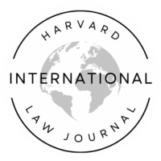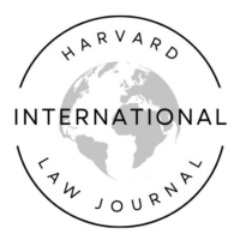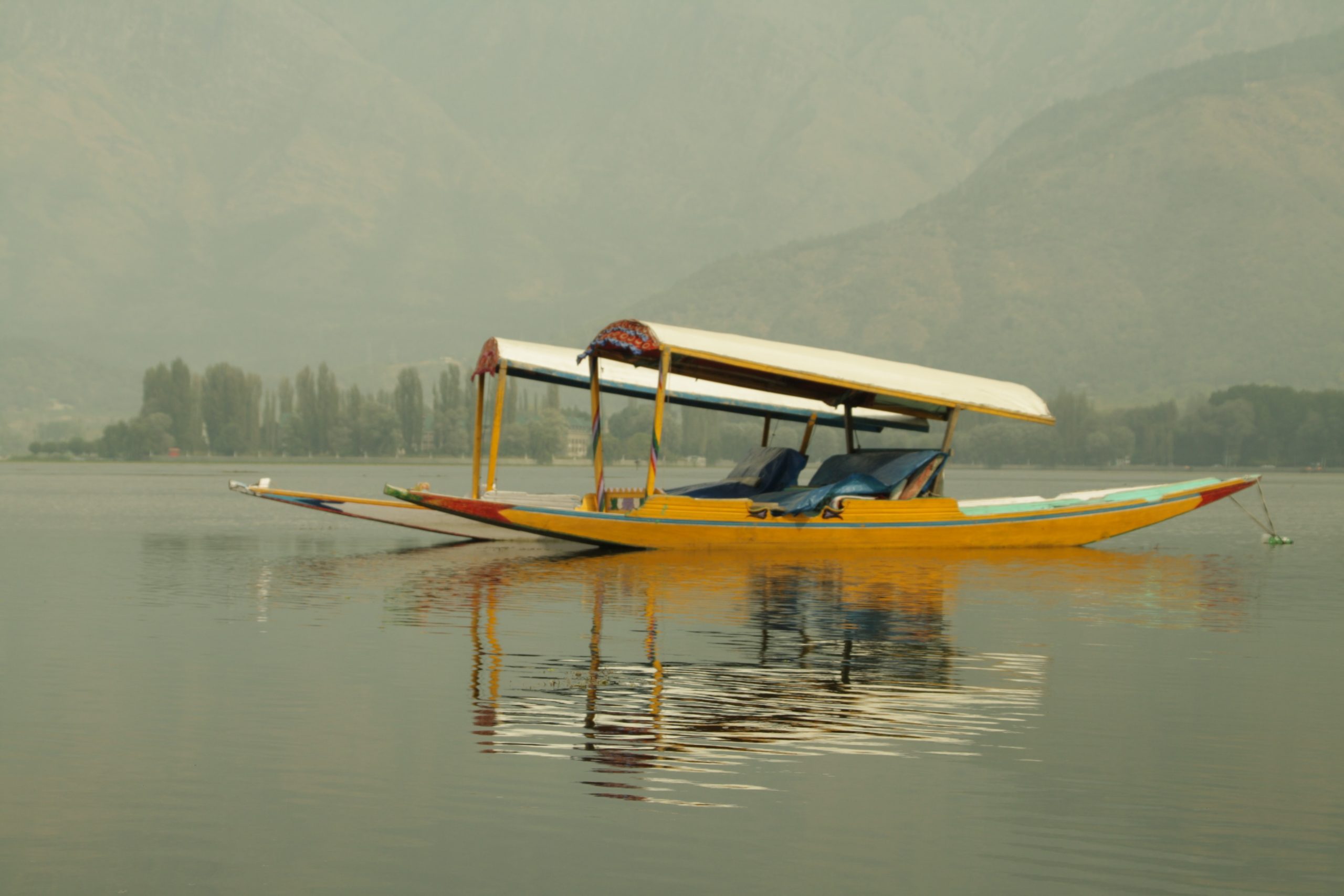Turning Sanctions into Reparations: Lessons for Russia/Ukraine
EVAN J. CRIDDLE*
Abstract
Within the past year, members of Congress have introduced nearly a dozen bills to make Russia pay for its military aggression against Ukraine. This Essay argues that none of the bills are satisfactory because they would either violate international law or fail to deliver meaningful compensation to Ukraine. Instead, the Essay urges policymakers to use economic sanctions as leverage to compel Russia to make reparations through an international claims-settlement process.
Introduction
When Russia invaded Ukraine in February 2022, the international community launched a vigorous counteroffensive without firing a shot. Over thirty States imposed economic sanctions against Russia, including sweeping asset freezes, import bans, export controls, and investment restrictions.[1] Russia lost access to nearly half of its central bank reserves, valued at roughly $300 billion,[2] as well as its $10 billion sovereign direct investment fund.[3] Foreign regulators targeted Russian officials and oligarch-allies of the Kremlin, seizing mega-yachts, helicopters, real estate, and artwork worth tens of billions of dollars, and blocking hundreds of millions of dollars in private bank accounts.[4] These measures delivered a heavy blow to the Russian economy, but they failed to achieve their primary purpose: compelling Russian President Vladimir Putin to call off his ruinous “special military operation.”[5] Rather than back down, Putin pressed forward with a brutal campaign that systematically reduced Ukrainian cities to rubble.
As this tragedy was unfolding, international observers began to inquire whether economic sanctions, which have failed so spectacularly to curb Russian aggression,[6] might be repurposed to alleviate suffering in Ukraine. Some commentators urged the United States and its allies to confiscate and transfer Russia’s frozen assets to Ukraine as humanitarian aid.[7] Others proposed using frozen assets to bankroll Ukraine’s national defense or to promote reconstruction after the war.[8] Each of these suggestions found supporters in Congress, generating a flurry of bills to unlock Russia’s frozen assets for Ukraine’s benefit.
Part I of this Essay sorts through these legislative proposals to expose their legal and practical deficiencies. Most of these proposals would authorize the Executive Branch to confiscate Russian assets, violating international investment law and triggering duties of repayment under the Takings Clause of the Fifth Amendment and customary international law.[9] Some members of Congress have called for abolishing Russia’s sovereign immunity as a way to deliver financial assistance to Ukraine,[10] but this would violate the United States’ obligations under customary international law. Congress could authorize the forfeiture of private Russian assets linked to public corruption or other criminal activities, as some policymakers have proposed,[11] but those assets are insufficient to bankroll Ukraine’s reconstruction. Thus, none of the bills introduced in Congress would secure substantial reparations for Ukraine while also respecting the rule of international law.
Part II outlines a better strategy for leveraging Russia’s frozen assets to secure reparations for Ukraine. Under international law, the United States and its allies may use asset freezes, trade and investment restrictions, and other economic sanctions to compel Russia to compensate Ukraine for the harm produced by its illegal invasion. The greater the injuries caused by Russian attacks, the greater Russia’s legal obligation to compensate Ukraine at the end of the war. For this strategy to work, however, the United States and its partners must remain patient and resolute, keeping Russian assets on ice and refusing to lift other sanctions until Russia compensates Ukraine. While this strategy will take time to bear fruit, it is realistic to expect that it will generate substantial (if imperfect) compensation for Ukraine without undermining international law.
I. Legislative Proposals
Russian aggression has inflicted catastrophic destruction and suffering in Ukraine. Missile and artillery strikes, aerial bombardment, and kamikaze drone attacks have devastated major cities, including Kharkiv, Kherson, Kyiv, Mariupol, and Severodonesk, inflicting trillions of dollars in damage.[12] Thousands of Ukrainians have perished, many as victims of Russian war crimes.[13] Many more have suffered serious mistreatment, including torture, at the hands of Russia’s military.[14] Given the scale and gravity of these harms and Ukraine’s urgent need for financial assistance, it makes sense that sympathetic policymakers in the United States would explore every option to make Russia “pay a heavy price” for its aggression in Ukraine.[15]
Unfortunately, recent congressional proposals to hold Russia financially accountable for its aggression have serious flaws. Nearly all of the bills proposed to date raise serious constitutional concerns, and most would violate the United States’ obligations under international law. Others are too limited in scope to move the needle on Ukraine’s relief and reconstruction.
Confiscation
In the first weeks of Russia’s invasion of Ukraine, members of Congress circulated a series of bills to empower President Biden to confiscate Russia’s frozen assets for the benefit of Ukraine. “Confiscation,” for these purposes, refers to extinguishing a party’s legal interests in assets and vesting title in the U.S. government.[16] Authorizing the Executive Branch to confiscate Russia’s frozen assets could make hundreds of billions of dollars available to Ukraine, bolstering its national defense, alleviating suffering, and advancing its eventual reconstruction after the war.
Federal legislation does not currently allow the Executive Branch to confiscate Russian assets. The International Emergency Economic Powers Act (IEEPA) does empower the President to block transactions involving foreign assets during a national emergency,[17] and President Biden has used this authority to immobilize Russian assets in the United States.[18] However, IEEPA does not permit the Executive Branch to confiscate foreign assets unless the United States “is engaged in armed hostilities or has been attacked by a foreign country or foreign nationals.”[19] Thus far, these prerequisites for asset confiscation are not satisfied: the United States has not suffered an “attack” from Russia within the meaning of the IEEPA,[20] and President Biden has declared that the United States “will not be directly engaged” in Ukraine’s self-defense “either by sending American troops to fight in Ukraine or by attacking Russian forces.”[21] In recognition of these limitations, Treasury Secretary Janet Yellen has emphasized that confiscating Russian assets is “not something that is legally permissible in the United States.”[22] IEEPA does not allow the Executive Branch to confiscate and transfer Russian assets to Ukraine.
Several bills would alter the status quo by empowering the President to confiscate Russia’s frozen assets.[23] A representative example is the Asset Seizure for Ukraine Reconstruction Act (ASURA), introduced by Senator Sheldon Whitehouse and several colleagues.[24] This draft legislation would empower the President to confiscate assets “valued in excess of $2,000,000” that are subject to U.S. sanctions based on “corruption, human rights violations, the malign influence of the Russian Federation, or conflicts in Ukraine.”[25] Confiscated assets would “vest in the Government of the United States,” after which they could be liquidated or sold for Ukraine’s benefit.[26]
ASURA quickly attracted constitutional objections. The American Civil Liberties Union (ACLU) argued that the bill would violate the Fifth Amendment’s Due Process Clause because it did not afford an opportunity for foreign asset holders to challenge confiscations in court.[27] In response to this concern, Representatives Tom Malinowski and eighteen co-sponsors proposed a watered down version of ASURA in the House of Representatives.[28] The House version does not purport to expand the President’s confiscation authority but instead merely expresses the “sense of Congress” that “[t]he President should take all constitutional steps to seize and confiscate assets . . . of foreign persons whose wealth is derived in part through corruption linked to or political support for the regime of Russian President Vladimir Putin.”[29]
Even setting aside due process objections to ASURA, there are reasons to question whether Congress can and should authorize the President to confiscate Russian assets. For example, confiscating assets from Russia—a nominally “friendly” foreign power—without compensation would violate the Takings Clause, as the Supreme Court held nearly a century ago in Russian Volunteer Fleet v. United States.[30] Thus, even if Congress were to expand the President’s statutory authority to confiscate Russian assets, the Constitution would prevent the President from using this authority to take Russian assets without compensation.
Confiscating Russian assets would also violate international law. Under customary norms of international investment law, the wholesale confiscation of Russian assets would constitute a wrongful expropriation, triggering a duty of compensation.[31] If the United States unilaterally confiscated Russia’s frozen assets for Ukraine’s benefit, therefore, Russia could claim a right to reimbursement under international law.[32]
Neither the Senate nor the House version of ASURA is currently on track to become law, and that is almost certainly for the best.[33] As noted, the Senate version is unconstitutional and would violate the United States’ obligations under international law. The House version avoids these pitfalls, but only because it does not grant any new powers to the Executive Branch. Under both versions, the President is unable to confiscate Russia’s frozen assets without leading the United States into combat—a step that the White House has firmly ruled out. Thus, neither version of ASURA offers a workable solution for delivering financial assistance to Ukraine.
Forfeiture
Another option for unlocking Russia’s frozen wealth is asset forfeiture. Under current federal law, asset forfeiture takes three forms. First, some federal criminal statutes, such as the Racketeering Influenced and Corrupt Organizations Act (RICO), authorize the federal government to initiate in personam actions for criminal forfeiture of property connected to various illegal activities.[34] Second, the federal government may seek civil forfeiture of property linked to certain designated crimes, such as embezzlement and money laundering, through in rem civil actions.[35] Third, under the Tariff Act of 1930, the federal government may initiate administrative forfeiture proceedings in rem against certain types of personal property that have been seized under U.S. customs laws, including a “vessel, vehicle, aircraft, merchandise, or baggage” valued at $500,000 or less.[36] Together, these three avenues for asset forfeiture offer opportunities for the Executive Branch to harvest the ill-gotten gains of Russian oligarchs and corrupt politicians for Ukraine’s benefit.
Recognizing the potential of asset forfeiture, the Biden administration in April 2022 proposed a “comprehensive legislative package” to “establish new authorities for the forfeiture of property linked to Russian kleptocracy.”[37] The White House proposal would establish “a new, streamlined administrative process,” backstopped by expedited judicial review, to facilitate the administrative forfeiture of private assets belonging to sanctioned Russian nationals which are related to specified unlawful conduct.[38] The White House plan would also facilitate criminal forfeiture by expanding RICO’s definition of “racketeering” to include sanctions evasion and by “making it unlawful for any person to knowingly or intentionally possess proceeds directly obtained from corrupt dealings with the Russian government.”[39] Forfeited assets would then be earmarked “to remediate harms of Russian aggression toward Ukraine.”[40] Several Senators have endorsed the White House plan and are collaborating across the political aisle to develop draft legislation that would expand the administration’s authority to pursue forfeiture against private Russian assets.[41]
Expanding domestic forfeiture law in these ways could unlock hundreds of millions of dollars for Ukraine’s benefit,[42] but Congress must first resolve some significant legal issues.[43] As Professor Paul Stephan has observed, the White House proposal raises several due process concerns.[44] First, applying new forfeiture legislation retroactively to Russian assets seized at the beginning of the war might infringe the Fifth Amendment’s Due Process Clause.[45] Second, due process might also require that federal agencies strengthen procedural safeguards by giving foreign asset-holders individualized notice of forfeiture proceedings.[46] Third, applying forfeiture to conduct that bears no meaningful connection to the United States might implicate due process concerns to the extent that it would extend the reach of U.S. law to transactions with no meaningful contact to the United States.[47] If Congress wants to prevent Russia from challenging the White House plan successfully in court, any legislation it enacts must attend to these constitutional concerns.
Even if Congress manages to pass new legislation expanding the federal government’s forfeiture powers, this victory would be little more than symbolic when assessed against the backdrop of Russia’s financial accountability for the war in Ukraine. The harm Ukraine has suffered from Russian attacks—whether measured in lives lost, property damage, or the disruption of economic activity—is many orders of magnitude greater than the value of the yachts, planes, real estate, and other private assets that the United States and its partners have seized from Russian elites. The only way to make significant headway on Russia’s financial obligations to Ukraine would be to tap Russia’s massive central bank reserves and sovereign wealth funds. Yet, the White House’s “comprehensive legislative package” for asset forfeiture would not leave those sovereign assets untouched. Any serious effort to make Russia pay for Ukraine must therefore venture beyond asset forfeiture to find mechanisms for accessing Russia’s sovereign wealth.
Abrogating Sovereign Immunity
With these concerns in mind, some commentators have called for Congress to abrogate Russia’s immunity from civil litigation in domestic courts.[48] At present, the Foreign Sovereign Immunity Act (FSIA) does not permit aggrieved parties to bring civil actions against foreign States, much less to execute judgments against foreign central bank reserves, based on injuries suffered in armed conflicts.[49] This means that the federal government may not pursue forfeiture against Russia’s sovereign assets, and Ukrainian plaintiffs cannot sue Russia in U.S. courts for injuries caused by Russian attacks.[50] If Congress were to eliminate Russia’s sovereign immunity under the FSIA, this would establish a powerful new mechanism to make Russia pay for its aggression against Ukraine.
Representatives Debbie Dingell and Fred Upton have introduced legislation to make this idea a reality. Their proposed Ukrainian Sovereignty Act would eliminate sovereign immunity for civil actions seeking money damages “for physical injury, including death, property damage, or loss of property caused by [a] foreign state’s invasion of another sovereign nation located in Europe . . . by or at the direction of the foreign state,” provided that the invasion was condemned by the U.N. General Assembly and both chambers of Congress.[51] The Ukrainian Sovereignty Act also provides that the sovereign assets of an aggressor State—including central bank reserves—“shall not be immune from attachment in aid of execution, or from execution, upon a judgment entered by [an American] court.”[52] These provisions would clear the way under domestic law for Ukrainian civilians to sue Russia in U.S. courts.[53]
Whether the Ukrainian Sovereignty Act would pass muster under international law is another matter. In an influential 2012 judgment, Jurisdictional Immunities of the State, the International Court of Justice (ICJ) declared that customary international law entitles States to immunity from civil litigation in foreign courts for claims arising from war-related injuries.[54] In particular, the ICJ held that war crimes committed by German armed forces against Italian civilians during World War II were covered by sovereign immunity because they involved the exercise of sovereign powers (acta jure imperii), rather than commercial activities (acta jure gestionis).[55] According to the ICJ, sovereign immunity barred litigation in Italian courts as a threshold matter even if Germany’s war crimes violated peremptory norms of general international law (jus cogens).[56] Although the ICJ’s opinion remains controversial[57] and lacks the formal status of binding precedent under international law,[58] it shapes how international lawyers understand the customary international law of State immunities today.[59]
The ICJ’s analysis in the Jurisdiction Immunities case suggests that Russia also enjoys sovereign immunity in U.S. courts. Russia’s aggression, however contemptible, is a military campaign that entails the exercise of sovereign powers. Russia has not waived its sovereign immunity, nor is it likely to do so. Although Russia’s armed attacks violate jus cogensnorms, including the prohibitions of aggression, war crimes, and crimes against humanity, this would not diminish Russia’s immunity from litigation in foreign courts under the ICJ’s reading of customary international law. Consequently, if Congress were to abrogate Russia’s sovereign immunity, it could set the United States on a course to violate international law. If the United States wants to deliver the message that international law—including the prohibition against aggression, which Russia has so flagrantly violated— is worthy of respect, it would be a mistake for Congress to disregard Russia’s sovereign immunity under international law.
Members of Congress deserve praise for exploring every option to hold Russia accountable financially for its aggression in Ukraine. Russia’s brazen violation of Ukraine’s sovereign rights cries out for robust remedies. In the final analysis, however, there is little that Congress can do to hold Russia accountable within the constraints imposed by the Constitution and international law. Congress may strengthen the federal government’s authority to compel the forfeiture of private Russian assets, but this would produce only a tiny fraction of the funds needed for Ukraine’s relief and reconstruction. When it comes to Russia’s central bank reserves and other sovereign assets, the Constitution and international law afford Congress little room to maneuver. Thus, if U.S. policymakers want to make Russia pay for its war crimes in Ukraine, they would do well to look for solutions outside Congress.
II. How To Make Russia Pay
Fortunately, there is another way that the United States and its partners can make Russia pay for Ukraine: they can use asset freezes, trade restrictions, and other economic sanctions as leverage to compel Russia to deliver war reparations through an international claims-settlement mechanism. Unlike the flashy legislative proposals that have dominated public debates since the outset of the war, a strategy based on multilateral economic coercion could eventually succeed in delivering significant reparations to Ukraine without violating the Constitution and international law.
Russia’s Responsibility To Make Reparation
As a first step, the United States and its partners should put Russia on notice that it bears financial responsibility under international law for the catastrophic harm it has caused in Ukraine. An “essential principle” of international law is that every internationally wrongful act triggers a duty to provide “reparation.”[60] As the Permanent Court of Justice explained in the Chorzów Factory case, this “reparation must, as far as possible, wipe out all the consequences of the illegal act and reestablish the situation which would, in all probability, have existed if that act had not been committed.”[61] When restitution in kind is not possible or would be insufficient to compensate an injured State for their loss, international law requires the “payment of a sum corresponding to the value which a restitution in kind would bear” plus “damages for loss sustained which would not be covered by restitution in kind or payment in place of it.”[62] Since Russia’s invasion into Ukraine constitutes a manifest violation of the U.N. Charter,[63] there can be no serious question that Russia bears responsibility under international law to compensate Ukraine in full for the grave injuries produced by its armed attacks. Ideally, the United States and its partners would seek additional resolutions from international institutions, such as the U.N. General Assembly, condemning Russia’s aggression and affirming Russia’s obligation to make full reparation to Ukraine.
Economic Sanctions as Countermeasures
Next, the United States and its partners should make clear that they are using asset freezes and other economic sanctions as countermeasures to compel Russia to satisfy its responsibility to compensate Ukraine.
Under international law, a “countermeasure” is an “act of non-compliance, by a State, with its obligations owed to another State,” taken “in response to a prior breach of international law by that other State and aimed at inducing it to respect its obligations.”[64] To be permissible under international law, countermeasures may only be used to induce a recalcitrant State to comply with its international obligations.[65] Moreover, countermeasures must, “as far as possible, be taken in such a way” that they can be reversed as soon as the recalcitrant State has resumed compliance with international law.[66] States therefore may not use countermeasures to confiscate foreign assets, because this would result in a permanent deprivation.[67] Instead, when a State freezes or seizes foreign property as a countermeasure, it must preserve the property so that the property can be returned intact when countermeasures end.
Ordinarily, only a State that has suffered injury from a breach of international law may use countermeasures against a responsible State. When an “obligation breached is owed to the international community as a whole” (erga omnes), however, any State may use countermeasures to compel “cessation of the internationally wrongful act” and “performance of the obligation of reparation . . . in the interest of the injured State or of the beneficiaries of the obligation breached.”[68]
These features of international law would support efforts by the United States and its partners to use economic sanctions as countermeasures against Russia. Russia’s aggression in Ukraine violates an obligation erga omnes—the bedrock legal requirement to refrain from “the threat or use of force against the territorial integrity or political independence of any State.”[69] In addition to the original act of invasion, Russia’s war crimes and crimes against humanity in Ukraine also violate obligations erga omnes.[70] Accordingly, all States are entitled under international law to demand that Russia cease its belligerent conduct and make reparations, including though the payment of compensation.[71] States may also use asset freezes, trade restrictions, and other economic sanctions as countermeasures to compel Russia to compensate Ukraine for its injuries.[72] Although the United States and its partners may not confiscate Russian assets as a countermeasure,[73] nothing would prevent them under international law from maintaining asset freezes for as long as it takes to convince Russia to compensate Ukraine.
The Long Road to Reparations
International economic sanctions rarely succeed in persuading States to call off armed conflict,[74] so it should come as no surprise that asset freezes and other economic sanctions have not yet convinced Putin to pull out of Ukraine. This does not mean that economic sanctions cannot persuade Russia to provide redress after the war. In the past, the international community has used economic sanctions successfully on a number of occasions to make uncooperative States disgorge reparations. For instance, following the 1991 Gulf War, Iraq provided compensation to Kuwait through the U.N. Compensation Commission (UNCC) in exchange for relief from international economic sanctions.[75] Similarly, in 2003, Libya abandoned its nuclear aspirations, dismantled its missile and chemical weapons programs, and compensated terrorism victims in return for sanctions relief.[76] These examples demonstrate that economic sanctions can be powerful tools for extracting reparation even from rogue States ruled by obstinate autocrats.
Applying this strategy to Russia might seem unpromising because its success would depend on Putin’s willingness to make concessions in exchange for easing sanctions. Putin has staked his political reputation on thumbing his nose at foreign adversaries, such as the European Union and the United States. All signs suggest that he is settling in for a long campaign in Ukraine, wagering on Russia’s ability to outlast Ukrainian resistance and international outrage.[77] Putin might win this bet; with energy prices surging and with weak Ukrainian grain exports threatening global food supplies,[78] it is unclear how long world leaders will be able to sustain, let alone ratchet up, economic sanctions against Russia. Trade and investment restrictions are a double-edged sword, inflicting economic pain not only on Russia, but also on the European Union, the United States, and the broader global economy. Over time, economic and political pressures are likely to limit how long the United States and its partners can maintain costly trade and investment restrictions.
Even so, time is not necessarily on Putin’s side. As long as economic sanctions remain in place, Russia will find it difficult to promote economic growth, attract foreign capital, maintain liquidity, and buffer its economy against currency volatility. Moreover, as far as asset freezes are concerned, the United States and its partners can afford to be patient. Preventing Russia from accessing its frozen central bank reserves and other sovereign wealth imposes minimal costs on the United States and its partners. There is no way Russia can recover its sovereign assets and the frozen wealth of its ruling elite without cooperation from the United States and its partners. Hence, if Russia wants to reclaim any of its frozen assets, it will have no choice but to meet sanctioning States at the negotiation table. If history is any guide, Russia will eventually accept a deal on war reparations in exchange for normalizing trade relations, unblocking private assets, and reclaiming some portion of its sovereign wealth. When that day arrives, a comprehensive negotiated settlement on reparations could unlock a substantial percentage of Russia’s frozen assets for Ukraine’s reconstruction.
There are a variety of models for how Russian assets could be dispersed to the Ukrainian government and Ukrainian nationals. Russia could make a lump sum payment to Ukraine to resolve all war-related claims, perhaps paid in part from central bank reserves and other assets currently locked in offshore accounts. Russia and Ukraine could establish a bilateral claims-settlement body akin to the Iran-U.S. Claims Tribunal, which handled expropriation claims arising from the Iran Hostage Crisis.[79] The United Nations could revive the recently shuttered UNCC to handle Ukrainian claims against Russia.[80] Each of these models would present daunting administrative challenges.[81] Those responsible for distributing reparations would have to take care to allocate funds prudently, efficiently, and equitably to advance relief and reconstruction while avoiding institutional corruption and weeding out fraudulent claims. Ultimately, however, all of these approaches offer practical mechanisms for delivering reparations to Ukraine.
Pending a comprehensive settlement on war reparations, the United States and its partners can leverage Russia’s frozen assets to assist Ukraine in other ways. Some U.S. officials have called for a new “Marshall Plan” to support Ukraine through international loans and other financial assistance.[82] Were this proposal to become a reality, the United States could condition financial assistance on Ukraine’s agreement to repay international loans using Russian reparations. This debt repayment strategy could help to defuse domestic political opposition to international development assistance, while also strengthening the resolve of the United States and its partners to keep sanctions in place until Russia eventually relents on war reparations.
Conclusion
Congress’s problematic proposals to convert Russia’s frozen assets into reparations for Ukraine should serve as a cautionary tale about the legal limits of economic sanctions. Both domestic constitutional law and international law constrain how the United States may handle frozen assets. When deployed as countermeasures, asset freezes may be used only for limited purposes under international law. States may not use confiscate foreign assets, nor may they abrogate foreign sovereign immunity through asset forfeiture or civil litigation in domestic courts.
If Congress were to proceed down one of those legally proscribed paths, as some members of Congress have proposed, the costs for the United States would be high. Confiscating Russian assets or abrogating Russia’s sovereign immunity would undermine international norms that safeguard trillions of dollars in U.S. direct foreign investment abroad, potentially inviting retaliation from Russia and setting a dangerous precedent for future international disputes.[83] These measures may also discourage foreign direct investment in the United States, threaten the dollar’s pole position as a favored currency for foreign central bank reserves, and weaken the United States’ ability to use economic sanctions to influence other States’ behavior in future crises. Moreover, responding to Russian aggression with illegal expropriations would play into Putin’s hands by eroding the rules-based international order. It would add fuel to Putin’s argument that Russia’s adversaries have equally dirty hands, so there is no meaningful difference between Russia’s “special military operation” and the sanctions other States have levied in response. The United States and its partners need not play into this false narrative. By adhering strictly to the law of countermeasures, they can compel Russia to compensate Ukraine while also upholding the rule of international law.
So far, the Biden administration has adhered to this playbook.[84] The Treasury Department has kept Russia’s sovereign assets on ice, while the Department of Justice has sought opportunities to target Russian oligarchs for criminal, civil, and administrative forfeiture based on their personal criminal activities. These measures might appear feeble and ineffective in comparison to Putin’s ruthless military campaign, but it is still too early to assess their full impact. Viewed on a longer time horizon, the economic sanctions against Russia are laying the groundwork for a negotiated endgame in which Russia will pay dearly for its aggression—likely using assets that are currently frozen around the world. In the meantime, Congress would be wise to hold the course, resisting the temptation to enact hasty statutory shortcuts that would violate the Constitution and international law.
[*] Ernest W. Goodrich Professor, William & Mary Law School. This essay has benefited from conversation with Scott Anderson, Chimène Keitner, and Paul Stephan, as well as workshop participants at William & Mary Law School.
[1] See U.S. Dep’t of the Treasury, Treasury Prohibits Transactions with the Central Bank of Russia and Imposes Sanctions on Key Sources of Russia’s Wealth, (Feb. 28, 2022), https://home.treasury.gov/news/press-releases/jy0612; Elena Chachko & J. Benton Heath, A Watershed Moment for Sanctions? Russia, Ukraine, and the Economic Battlefield, 116 Am. J. Int’l L. Unbound 135, 135-36 (2022).
[2] New Financial and Trade Sanctions Against Russia, Cong. Res. Serv. (Mar. 17, 2022), https://crsreports.congress.gov/product/pdf/IF/IF12062#:~:text=Tightening%20Financial%20Sanctions.&text=3771%3B%20H.R.,entities%20incorporated%20in%20Russia%20(H.R..
[3] John Hyatt, How Putin Used Russia’s Sovereign Wealth Fund to Create a “State-Sponsored Oligarchy,” Forbes, Mar. 8, 2022, https://www.forbes.com/sites/johnhyatt/2022/03/08/sanctions-on-russian-fund-show-dashed-hope-of-moscows-cooperation-with-democracies/?sh=1a90fb99a431.
[4] Fact Sheet: President Biden’s Comprehensive Proposal to Hold Russian Oligarchs and Elites Accountable, White House (Apr. 28, 2022), https://www.whitehouse.gov/briefing-room/statements-releases/2022/04/28/fact-sheet-president-bidens-comprehensive-proposal-to-hold-russian-oligarchs-accountable/ [hereinafter Biden Proposal].
[5] Andrew Osborn & Polina Nikolskaya, Russia’s Putin Authorizes ‘Special Military Operation’ Against Ukraine, Reuters (Feb. 24, 2022), https://www.reuters.com/world/europe/russias-putin-authorises-military-operations-donbass-domestic-media-2022-02-24/.
[6] Before Russia’s 2022 full-scale invasion of Ukraine, economic sanctions also failed to persuade Russia to withdraw from Crimea, which it had seized in 2014. See Anders Åslund & Maria Snegovaya, The Impact of Western Sanctions on Russia and How They Can Be Made Even More Effective (Atlantic Council 2021), https://www.atlanticcouncil.org/wp-content/uploads/2021/05/The-impact-of-Western-sanctions-on-Russia-and-how-they-can-be-made-even-more-effective-5.2.pdf (observing that “Western sanctions have not succeeded in forcing the Kremlin to fully reverse its actions and end aggression in Ukraine”).
[7] E.g., Simon Johnson & Oleg Ustenko, A Basic Income for Ukrainians, Paid for with Frozen Russian Assets, Politico (Mar. 2, 2022), https://www.politico.com/news/magazine/2022/03/02/frozen-russian-assets-humanitarian-relief-00013286.
[8] E.g., Laurence H. Tribe, “Does American Law Currently Authorize the President to Seize Sovereign Russian Assets?,” Lawfare, May 23, 2022, https://www.lawfareblog.com/does-american-law-currently-authorize-president-seize-sovereign-russian-assets; Philip Zelikow & Simon Johnson, How Ukraine Can Build Back Better: Use the Kremlin’s Seized Assets to Pay for Reconstruction, Foreign Aff. (Apr. 19, 2022), https://www.foreignaffairs.com/articles/ukraine/2022-04-19/how-ukraine-can-build-back-better.
[9] See Asset Seizure for Ukraine Reconstruction Act § 2(1), H.R. 6930, 117th Cong. (Apr. 28, 2022) [hereinafter House ASURA]; Asset Seizure for Ukraine Reconstruction Act, S. 3838, 117th Cong. (2022) [hereinafter Senate ASURA]; Oligarch Asset Forfeiture Act, H.R. 7086, 117th Cong. (2022); Make Russia Pay Act, H.R. 7083, 117th Cong. (2022); Repurposing Elite Luxuries into Emergency Funds for Ukraine Act, H.R. 7596, 117th Cong. (2022); Yachts for Ukraine Act, H.R. 7187, 117th Cong. (2022).
[10] See Ukrainian Sovereignty Act, H.R. 7205, 117th Cong. (2022).
[11] See Confiscating Corrupt Criminal Proceeds Act of 2022, H.R. 7015, 117th Cong. (2022).
[12] Paola Tamma, Payback Time: The West Studies How To Make Russia Foot the War Bill, Politico (Apr. 12, 2022), https://www.politico.eu/article/payback-time-west-make-russia-pay-war-ukraine-bill/.
[13] Ukraine: Civilian Casualty Update 27 June 2022, U.N. Office of the High Commissioner for Human Rights, June 27, 2022, https://www.ohchr.org/en/news/2022/06/ukraine-civilian-casualty-update-27-june-2022.
[14] Id.
[15] Remarks by President Joe Biden on the Assistance the United States Is Providing to Ukraine, White House, Mar. 16, 2022, https://www.whitehouse.gov/briefing-room/speeches-remarks/2022/03/16/remarks-by-president-biden-on-the-assistance-the-united-states-is-providing-to-ukraine/.
[16] Cf. United Nations Convention Against Transnational Organized Crime art. 2(g), G.A. Res. 55/25, U.N. GAOR, 55th Sess, U.N. Doc. A/RES/55/25 (2001). (defining “confiscation” as “permanent deprivation of property by order of a court or other competent authority”).
[17] 50 U.S.C. § 1702(a)(1)(B) (2001).
[18] Fact Sheet: United States, G7 and EU Impose Severe and Immediate Costs on Russia, White House, Apr. 6, 2022, https://www.whitehouse.gov/briefing-room/statements-releases/2022/04/06/fact-sheet-united-states-g7-and-eu-impose-severe-and-immediate-costs-on-russia/.
[19] 50 U.S.C. § 1702(a)(1)(C); see also Trading With the Enemy Act of 1917, 40 Stat. 411, as amended 50 U.S.C. § 4305(b)(1) (providing that “[d]uring the time of war the President may” order the confiscation of enemy assets to “vest . . . in the interest of and for the benefit of the United States”); Scott R. Anderson & Chimène Keitner, The Legal Challenges Presented by Seizing Frozen Russian Assets, Lawfare (May 26, 2022), https://www.lawfareblog.com/legal-challenges-presented-seizing-frozen-russian-assets (explaining why the IEEPA does not permit confiscating Russia’s frozen assets).
[20] See Paul B. Stephan, Seizing Russian Assets, 17 Capital Mkts. L.J. (forthcoming). But see Tribe, supra note 7 (arguing that Russian cyberattacks should be considered sufficient to permit asset confiscation under IEEPA).
[21] Joseph R. Biden, Jr., What America Will and Will Not Do in Ukraine, N.Y. Times, (May 31, 2022), https://www.nytimes.com/2022/05/31/opinion/biden-ukraine-strategy.html.
[22] Transcript of Press Conference from Secretary of the Treasury Janet L. Yellen in Bonn, Germany (May 18, 2022), https://home.treasury.gov/news/press-releases/jy0793.
[23] See sources cited supra note 8.
[24] Senate ASURA, supra note 8.
[25] Id. § 2(a)-(b).
[26] Id. § 2(c).
[27] See Jeff Stein, ACLU Helped Defeat Plan To Seize Russian Oligarchs’ Funds for Ukraine, Wash. Post (Apr. 8, 2022), https://www.washingtonpost.com/us-policy/2022/04/08/aclu-ukraine-russia-oligarchs/ (discussing the ACLU’s pushback against the Senate’s ASURA).
[28] House ASURA, supra note 8.
[29] Id. § 2(2).
[30] See 282 U.S. 481, 491-92 (1931). In contrast, Congress may authorize the confiscation of “enemy” property without compensation during armed conflict. United States v. Chemical Foundation, 272 U.S. 1, 11 (1926).
[31] See G.A. Declaration on the Human Rights of Individuals Who Are Not Nationals of the Countries in Which They Live, A/RES/40/144, 13 Dec. 1985, Art. 9 (“No alien shall be arbitrarily deprived of his or her lawfully acquired assets.”).
[32] See Articles on Responsibility of States for Internationally Wrongful Acts art. 31, U.N. Doc. A/56/10, GAOR, 56th Sess., Supp. No. 10 (2001) [hereinafter ARSIWA] (“The responsible State is under an obligation to make full reparation for the injury caused by the internationally wrongful act.”).
[33] The House bill sailed through the House in a near-unanimous vote, only to languish in the Senate Foreign Relations Committee. See All Actions H.R. 6930—117th Cong. (2021-2022), https://www.congress.gov/bill/117th-congress/house-bill/6930/all-actions. The Senate version never made it out of the Senate Committee on Banking, Housing, and Urban Affairs. See Action Overview S.3838—117th Cong. (2021-2022), https://www.congress.gov/bill/117th-congress/senate-bill/3838/actions.
[34] 18 U.S.C. § 982 (2016).
[35] Id. §§ 981, 983-85.
[36] 19 U.S.C. §§ 1905-09; see generally Types of Federal Forfeiture, U.S. Dep’t of Justice, https://www.justice.gov/afms/types-federal-forfeiture#:~:text=Description,part%20of%20the%20defendant’s%20sentence (discussing these three varieties of forfeiture).
[37] Biden Proposal, supra note 4.
[38] Id.
[39] Id.
[40] Id. Consistent with the White House proposal, Representative Tim Burchett has introduced a bill in the House to encourage the use of civil forfeiture to strip assets from Belorussian and Russian nationals to fund humanitarian relief in Ukraine. See Confiscating Corrupt Criminal Proceeds Act of 2022, H.R. 7015, 117th Cong. (2022).
[41] See KleptoCapture: Aiding Ukraine Through Forfeiture of Russian Oligarchs’ Illicit Assets, Senate Judiciary Committee Hearing (July 19, 2022), https://www.judiciary.senate.gov/meetings/kleptocapture-aiding-ukraine-through-forfeiture-of-russian-oligarchs-illicit-assets (discussing these efforts).
[42] Time will tell to what extent federal agencies will be able to establish the factual predicate for criminal, civil, or administrative forfeiture by connecting specific Russian assets to illegal activities in the United States or abroad.
[43] See Rishi Batra, Resolving Civil Forfeiture Disputes, 66 U. Kansas L. Rev. 399, 409-10 (2017) (observing that victim compensation is a traditional objective of civil forfeiture law).
[44] Statement of Paul B. Stephan, University of Virginia School of Law, Before a Hearing of the Senate Judiciary Committee on KleptoCapture: Aiding Ukraine through Forfeiture of Russian Oligarchs’ Illicit Assets, on July 19, 2022, at 5-12, https://www.judiciary.senate.gov/imo/media/doc/Testimony%20-%20Stephan%20-%202022-07-19.pdf.
[45] Id. at 6-8 (discussing the Supreme Court’s retroactivity analysis in Landgraf v. USI Film Prod., 511 U.S. 244, 267 (1994)).
[46] See id. at 11-12 (discussing this concern).
[47] See id. at 9 (expressing concern that expanding liability under the Foreign Corrupt Practices Act to transactions without substantial contacts to the United States would constitute an assertion of “universal jurisdiction over bribery and related corruption” everywhere in the world); see generally Anthony J. Colangelo, Constitutional Limits on Extraterritorial Jurisdiction: Terrorism and the Intersection of National and International Law, 48 Harv. Int’l L.J. 121, 123 (2007) (explaining how “constitutional limits—most notably those contained in the Fifth Amendment’s Due Process Clause— . . . restrict the ability of the United States to apply extraterritorially . . . U.S. code provisions outlawing conduct that is not subject to universal jurisdiction under international law”).
[48] See, e.g., Tim Hutchinson et al., How the US Can Make Russia Pay Ukrainians for Destroying their Country, CNN (Apr. 11, 2022), https://www.cnn.com/2022/04/11/opinions/ukraine-russia-monetary-damages-legislation/index.html.
[49] 28 U.S.C. §§ 1604-05. For an illuminating discussion of the FSIA’s application to frozen Russian assets, see Ingrid Wuerth, Does Foreign Sovereign Immunity Apply to Sanctions on Central Banks?, Lawfare, Mar. 7, 2022, https://www.lawfareblog.com/does-foreign-sovereign-immunity-apply-sanctions-central-banks.
[50] The FSIA does not bar plaintiffs from bringing civil actions against individual Russian officials or oligarchs, but some Russian officials could claim immunity ratione personae for their involvement in the Ukraine invasion. See Chanka Wickremasinghe, Immunities Enjoyed by Officials of States and International Organizations, in International Law 349, 362-69 (Malcolm Evans ed., 5th ed. 2018) (discussing these features of foreign official immunity under international law).
[51] Ukrainian Sovereignty Act, supra note 9, § 2(a).
[52] Id. § 2(b).
[53] The Biden administration would also have to permit individual claimants to access frozen Russian assets for the satisfaction of judgments, rather than keep them blocked to maintain leverage for future negotiations with Russia.
[54] Jurisdictional Immunities of the State (Germany v. Italy; Greece intervening), 2012 ICJ Rep. 99.
[55] Id. at 125, ¶ 60.
[56] Id. at 134-35, 140-42, ¶¶ 77, 92-97.
[57] See Simoncioni v. Repubblica Federale di Germania, Corte cost., 22 ottobre 2014 n. 238, Gazzetta Ufficiale [G.U.] (ser. spec.) n. 45, 29 ottobre 2014, I, 1, http://gazzettaaufficiale.it, translated at http://www.cortecostituzionale.it/documenti/download/doc/recent_judgments/S238_2013_en.pdf (declining to follow the Jurisdictional Immunities judgment); Claire E.M. Jervis, Jurisdictional Immunities Revisited: An Analysis of the Procedure Substance Distinction in International Law, 30 Eur. J. Int’l L. 105, 105 (2019) (critiquing the ICJ’s “sclerotic approach to the interaction between substantive and procedural law in the Jurisdictional Immunities case”); Kimberley N. Trapp & Alex Mills, Smooth Runs the Water Where the Brook Is Deep: The Obscured Complexities of Germany v. Italy, 1 Cambridge J. Int’l & Comp. L. 153 (2012) (exploring alternative approaches the Court could have taken to deciding the case).
[58] See Statute of the International Court of Justice art. 59 (“The decision of the Court has no binding force except between the parties and in respect of the particular case.”).
[59] See, e.g., Monica Hakimi, Constructing an International Community, 111 Am. J. Int’l L. 317, 334 (2017) (“The ICJ’s jurisprudence . . . limits the authority of international or national courts to enforce jus cogens norms.”).
[60] Factory at Chorzów (Pol. v. F.R.G.), 1928 P.C.I.J. (ser. A.) No. 17 (Sept. 13), at 47.
[61] Id.
[62] Id.
[63] See Aggression Against Ukraine, G.A. Res. A/RES/ES-11/1, Mar. 2, 2022, https://unwatch.org/wp-content/uploads/2022/05/A_RES_ES-11_1-EN.pdf (deploring “in the strongest terms the aggression by the Russian Federation against Ukraine in violation of Article 2 (4) of the Charter”).
[64] Christian J. Tams, Enforcing Obligations Erga Omnes in International Law 20 (2005); see also Case Concerning the Gabčíkovo-Nagymaros Project (Hungary v. Slovakia), ICJ Reports (1997) 1, ¶¶ 82-87; Air Services Agreement Case (France v. United States), 18 RIAA 416, ¶ 83 (1978); ARSIWA, supra note 32, ch. V (discussing circumstances precluding wrongfulness generally).
[65] ARSIWA, supra note 32, art. 49(1) (“An injured State may only take countermeasures against a State which is responsible for an internationally wrongful act in order to induce that State to comply with its obligations . . . .”).
[66] Id. art. 49(3).
[67] See Elizabeth Zoller, Peacetime Unilateral Remedies: An Analysis of Countermeasures 15 (1984).
[68] Id. art. 48(1)-(2); see also Martin Dawidowicz, Public Law Enforcement Without Public Law Safeguards? An Analysis of State Practice on Third-Party Countermeasures and Their Relationship to the UN Security Council, 77 Brit. Y.B. Int’l L. 333 (2007) (arguing that customary international law authorizes these “collective countermeasures”); Evan J. Criddle, Standing for Human Rights Abroad, 100 Cornell L. Rev. 269, 297-332 (2015) (explaining how States may apply countermeasures in the interests of foreign “beneficiaries”).
[69] U.N. Charter art. 2(4).
[70] See Barcelona Traction, Light & Power Co. (Belg. V. Spain), 1970 I.C.J. Rep. 3, 32, ¶¶ 33–34 (Feb. 5) (characterizing the prohibitions against aggression and genocide and “the principles and rules concerning the basic rights of the human person” as “obligations erga omnes”).
[71] See U.N. High Commissioner for Human Rights, Thematic Study of the Office of the United Nations High Commissioner for Human Rights on the Impact of Unilateral Coercive Measures on the Enjoyment of Human Rights, Including Recommendations Aimed at Ending Such Measures, 7–8 ¶ 22, U.N. Doc. A/HRC/19/33 (Jan. 11, 2012), available at http://www.ohchr.org/ Documents/HRBodies/HRCouncil/RegularSession/Session19/A-HRC-19-33_en.pdf (“Where human rights or other obligations owed to the international community as a whole (obligations erga omnes) are concerned, any State may take lawful measures against the State that breached the said erga omnes obligation . . . .”); Mary Ellen O’Connell, The Power and Purpose of International Law: Insights from the Theory and Practice of Enforcement 245 (2008) (“[T]he weight of opinion supports the right of states to take countermeasures in cases of erga omnes obligations with a jus cogens character.”); Tams, supra note 58, at 249–51 (“[I]ndividual States are entitled to take countermeasures in response to systematic or large-scale breaches of obligations erga omnes.”).
[72] See Omer Yousif Elegab, The Legality of Non-forcible Counter-measures in International Law 64-65 (1988) (explaining that countermeasures may be used to seek compensation for internationally wrongful acts).
[73] See id. at 111 (“[N]o form of confiscatory expropriation will be acceptable as counter-measures.”); David J. Bederman, Counterintuiting Countermeasures, 96 Am. J. Int’l L. 817, 824 (2002) (“Whatever countermeasure a state selects has to be capable of being reversed.”); Evan Criddle, Rebuilding Ukraine Will Be Costly. Here’s How to Make Putin Pay., Politico, Mar. 30, 2022, (explaining that this principle applies to frozen Russian assets); Paul Stephan, Response to Philip Zelikow: Confiscating Russian Assets and the Law, Lawfare, May 13, 2022 (explaining why states under international law may seize, but not confiscate, foreign state assets under the international law of countermeasures). But see Philip Zelikow, A Legal Approach to the Transfer of Russian Assets to Rebuild Ukraine, Lawfare, May 12, 2022 (arguing that asset confiscation would be a lawful countermeasure).
[74] See Gary Clyde Hufbauer et al., Economic Sanctions Reconsidered 10 (3d ed. 2007) (finding that “most attempts at altering military adventures [through sanctions] have not been successful”).
[75] See Lea Brilmayer, Understanding “IMCCs”: Compensation and Closure in the Formation and Function of International Mass Claims Commissions, 43 Yale J. Int’l L. 273, 297-98 (2018).
[76] See Jonathan B. Schwartz, Dealing with a “Rogue State”: The Libya Precedent, 101 Am. J. Int’l L. 553 (2007) (discussing negotiations leading to this result).
[77] See Catherine Belton, Putin Thinks West Will Blink First in War of Attrition, Russian Elites Say, Wash. Post (June 3, 2022), https://www.washingtonpost.com/world/2022/06/03/russia-putin-economy-attrition-war/.
[78] See European Council, Infographic – Ukrainian Grain Exports Explained, https://www.consilium.europa.eu/en/infographics/ukrainian-grain-exports-explained/ (last visited Dec. 30, 2022) (explaining that Russian aggression has disrupted Ukrainian grain exports and impacted global grain prices); European Parliament, Briefing: Economic Repercussions of Russia’s War on Ukraine – Weekly Digest (Dec. 20. 2022), https://www.europarl.europa.eu/RegData/etudes/BRIE/2022/733754/IPOL_BRI(2022)733754_EN.pdf (discussing economic pressures on European countries resulting from regional sanctions against Russian oil and natural gas).
[79] See Brilmayer, supra note 68, at 296-97.
[80] See id. at 297-98.
[81] For example, if Russia were to make a lump sum payment to Ukraine, Ukraine would have to decide how to allocate these funds to ameliorate suffering and promote reconstruction. This might include establishing an institutional mechanism at the national level to distribute reparations directly to private claimants. Alternatively, Russia and Ukraine could establish an international claim-settlement mechanism, such as a bilateral claims-settlement body. In either scenario, the vast number of potential claimants would present enormous administrative challenges.
[82] See Kate Connolly, Pete Buttigieg Calls for a New Marshall Plan to Rebuild Ukraine, Guardian (May 24, 2022), https://www.theguardian.com/world/2022/may/20/pete-buttigieg-says-us-backs-new-marshall-plan-to-rebuild-ukraine.
[83] See Bureau of Economic Analysis, Direct Investment by Country and Industry, 2020, https://www.bea.gov/news/2021/direct-investment-country-and-industry-2020 (noting $6.15 trillion in U.S. direct investment abroad at the end of 2020).
[84] See Readout of Russian Elites, Proxies, and Oligarchs (REPO) Task Force Deputies Meeting, U.S. Dep’t of Justice, Sept. 30, 2022, https://www.justice.gov/opa/pr/readout-russian-elites-proxies-and-oligarchs-repo-task-force-deputies-meeting (“Together with our partners, the steps we have taken so far have immobilized Russian assets as one of several means to induce Russia to come into compliance with its international law obligations, including the obligation to pay reparations.”).
Image credit: chuttersnap, CC0 1.0: https://creativecommons.org/publicdomain/zero/1.0/deed.en









